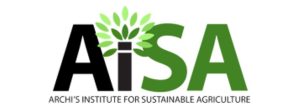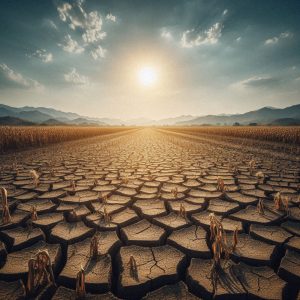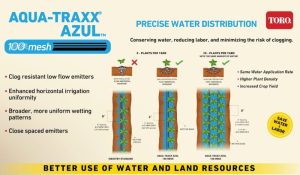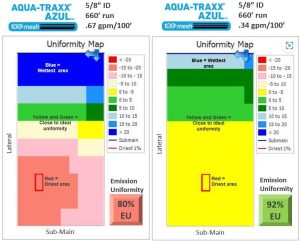Original post by Merced Sun-Star (Marina Gaytan)
Although underground irrigation is still a common way to water crops and fields, some farmers and landowners are moving to use surface irrigation amid one of the worst droughts in state history.
Underground irrigation delivers water through buried tubing or pipes while surface drip irrigation is positioned above the ground and is not permanent.
Aric Barcellos, with A-Bar Ag Enterprises, whose family business owns 8,000 acres along the West Side of Merced County, is one of many farmers who are becoming more serious about using surface drip systems to irrigate.
A-Bar Ag Enterprises farms cotton, tomatoes, asparagus, pomegranates, wheat, melons, onions and pistachios, and receives water from several water districts, including the Central California Irrigation District. The farm also pumps water from a well system.
Since the irrigation water coming from the Central California Irrigation District this year has been significantly reduced and no water is available from other districts, planning to distribute this year limited water supply and next year’s crop has been difficult. A-Bar Ag plans take about 2,000 acres out of production.
“This year we don’t have (as much water) so we are putting drip systems above ground to use less water so we can farm more acres,” Barcellos said Wednesday morning.
Scott Stoddard, a farm adviser with University of California Cooperative Extension Service, said one farmer he spoke to recently plans to use drip on his corn crops.
“You can get water savings by using drip, but often times what you’re really getting is improved water use efficiency,” Stoddard said. “You’ve improved your yield for the same amount of water”
The above ground drip system is known in the farming community as surface drip — a low-pressure, high-efficiency irrigation system — that leaves behind no drainage water. Barcellos estimates it costs around $400 an acre for a one-year system — which can save substantial water.
For example, Barcellos expects its use in a cotton field can save 6 to 8 inches of water per acre. That’s water can use to irrigate another piece of land. “The systems we’re putting in for this year just to get by,” he said. “We’re going to plant the crop and lay tape (the drip system) up on top of the ground.”
Surface drip over the last four years has become more important to farmers amid the increasingly dry conditions and because it allows for easier crop rotation. For example, they shift from cotton to tomatoes with no underground irrigation system to worry about.
“Now we don’t have any drain water going out either, we’re using every drop of water we got,” he said. “And with the surface drip we’re able to put fertilizer and water right to where the roots are, right where the crop needs it — there’s no waste.”
He estimates an underground system costs around $1,500 per acre to install, but he considers it an investment because it’s a permanent irrigation method that can be used on pistachios, pomegranates and other tree crops.
Flood irrigation, a technique in which the field is flooded with water, is minimally used by Barcellos, and can be difficult to control. The water is released onto the land and then it’s all about waiting, he said. In some cases, two to three weeks will go by before he irrigates the area again.
“With the drip, you see what your use is per day,” he explained. “Depending on size of the plant, how big the canopy is, with the drip we irrigate everyday (if needed), so the plant never stresses.”
Although drip may require more electrical consumption, due to pumps and filter systems, he said it is a more manageable irrigation system and puts out a much better crop.
Barcellos said figuring out the best system for irrigating crops helps ensure a successful farming operation. “We always said, ‘Build the factory and the factory will put out the fruit,’” he said.




